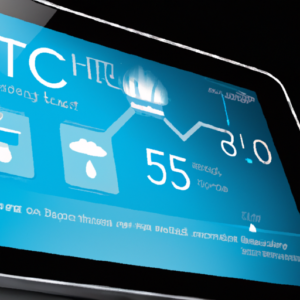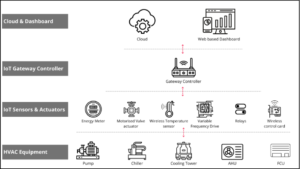

HVAC Services
Get Professional Repairs From The Area's Trusted HVAC Technicians. Ask About Our Services! We Offer Professional Heating & Cooling System Repairs And Guarantee Long-Lasting Results.
Got Question? Call us: (850) 678-2665Financing
Understanding HVAC Systems: An Introduction
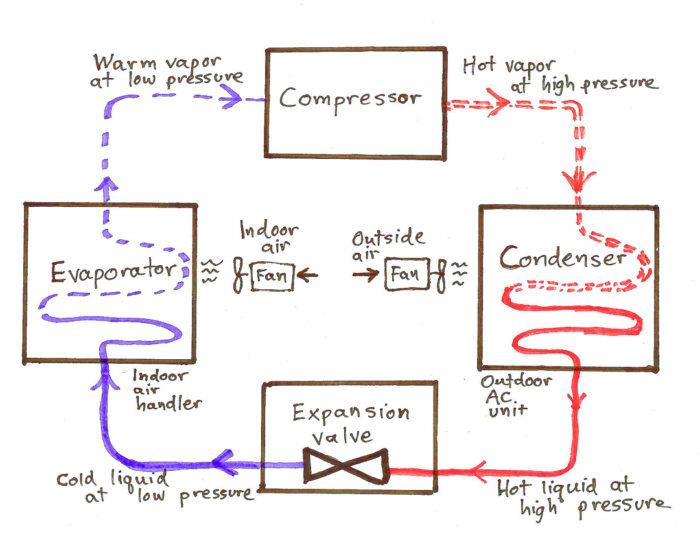
If you’ve ever wondered how your home stays cool in the summer and warm in the winter, then it’s time to get acquainted with HVAC systems. HVAC, which stands for heating, ventilation, and air conditioning, is an essential component of any comfortable living space. It regulates the temperature, humidity, and air quality to create a pleasant environment all year round. Whether you’re a homeowner or simply curious about how HVAC works, this article will provide you with a comprehensive introduction to understanding these systems. Discover the basics of HVAC and gain a better appreciation for the technology that keeps you comfortable day in and day out.
What is HVAC?
HVAC stands for Heating, Ventilation, and Air Conditioning. It refers to the system or technology used to control the indoor environment in buildings, homes, and vehicles. HVAC systems are responsible for providing thermal comfort, maintaining indoor air quality, and regulating humidity levels. Whether it’s the warmth provided during cold winter months or the cool breeze on a hot summer day, HVAC systems play a crucial role in keeping us comfortable throughout the year.
1. Understanding the Basics of HVAC Systems
1.1 Components of HVAC Systems
HVAC systems consist of various components that work together to achieve the desired indoor climate. The main components include:
- Furnaces: These are used in heating systems to generate and distribute warm air.
- Heat Pumps: Heat pumps are versatile devices that can provide both heating and cooling by transferring heat from one location to another.
- Air Conditioners: Air conditioners remove heat and humidity from the indoor air, providing cooling during hot weather.
- Thermostats: Thermostats are control devices that regulate temperature settings in HVAC systems.
- Ductwork: Ductwork is the network of pipes or channels that transports conditioned air throughout the building.
- Vents and Registers: These are openings in walls, floors, or ceilings that allow conditioned air to enter rooms and control airflow.
- Filters: Filters trap dust, pollen, and other airborne particles to improve indoor air quality.
- Insulation: Insulation helps to prevent heat transfer, ensuring efficient operation of HVAC systems.
- Refrigerant: Refrigerant is the fluid used to transfer heat in air conditioning and refrigeration systems.
1.2 How HVAC Systems Work
HVAC systems work by utilizing the principles of thermodynamics and fluid mechanics. In heating mode, a furnace or heat pump extracts heat from an external source, such as the air or the ground, and transfers it to the indoor space. In cooling mode, air conditioners or heat pumps extract heat from indoors and release it to the outside environment.
The process involves the circulation of refrigerant, which absorbs heat when it evaporates and releases heat when it condenses. Air is then pushed or pulled over the evaporator or condenser coils to transfer heat between the refrigerant and the surrounding air. This cycle repeats until the desired temperature is achieved.
1.3 Importance of HVAC Systems
HVAC systems are essential for maintaining a comfortable living and working environment. They provide heating during colder months and cooling during hot summers, ensuring that indoor temperatures are within a comfortable range. HVAC systems also play a vital role in humidity control, ventilation, and air filtration, which are crucial for maintaining indoor air quality and preventing the spread of airborne contaminants and allergens.
Properly functioning HVAC systems promote good health and well-being by reducing the risk of respiratory problems, allergies, and mold growth. Additionally, HVAC systems contribute to energy efficiency and cost savings by utilizing advanced technologies, such as energy recovery ventilation and smart thermostats, which optimize energy consumption and reduce utility bills.
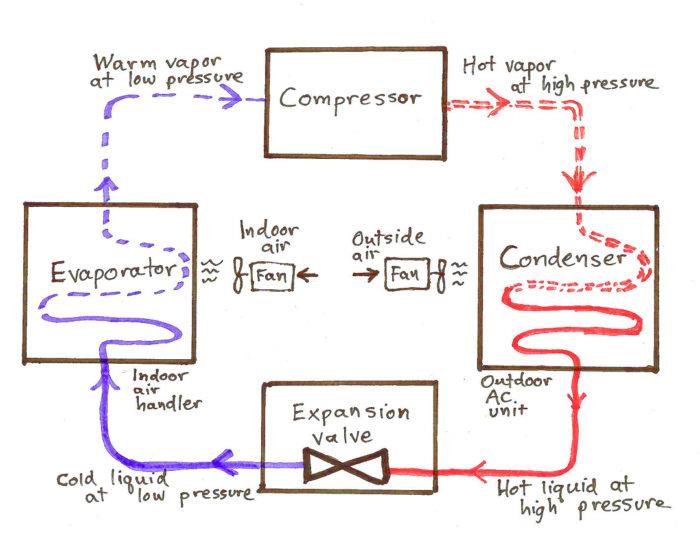
This image is property of www.indiastudychannel.com.
2. Types of HVAC Systems
There are several different types of HVAC systems, each with its own advantages and applications. Understanding the different types can help you choose the system that best fits your needs.
2.1 Central HVAC Systems
Central HVAC systems are the most common type found in residential and commercial buildings. They consist of a centralized unit that provides heating, cooling, and ventilation to multiple rooms or zones. Central HVAC systems typically use ductwork to distribute conditioned air throughout the building. These systems offer excellent temperature control and versatility.
2.2 Split HVAC Systems
Split HVAC systems are a variation of central systems that separate the components into indoor and outdoor units. The indoor unit contains the evaporator coil and air handler, while the outdoor unit houses the condenser coil and compressor. Split systems are flexible and can be used to cool a single room or multiple areas. They are popular in residential applications, especially for homes without ductwork.
2.3 Ductless HVAC Systems
Ductless HVAC systems, also known as mini-split systems, do not require ductwork for air distribution. They consist of individual indoor units connected to an outdoor compressor or condenser unit. Each indoor unit can be controlled separately, allowing for personalized temperature settings in different rooms or zones. Ductless systems are energy-efficient, easy to install, and provide precise temperature control.
2.4 Hybrid HVAC Systems
Hybrid HVAC systems combine the efficiency of a heat pump with the reliability of a furnace. These systems automatically switch between using electricity and fossil fuels (such as gas or oil) to provide heating based on the outdoor temperature. When the outdoor temperature is mild, the heat pump operates, and when it becomes colder, the furnace kicks in. Hybrid systems optimize energy savings and are ideal for regions with fluctuating weather conditions.
2.5 Geothermal HVAC Systems
Geothermal HVAC systems utilize the constant temperature of the ground as a heat source or sink. These systems circulate a fluid through underground pipes to exchange heat with the ground. In winter, the fluid absorbs heat from the ground and transfers it indoors for heating. In summer, the system removes heat from indoors and dissipates it into the cooler ground. Geothermal systems are highly efficient and environmentally friendly.
3. Components of HVAC Systems
3.1 Furnaces
Furnaces are heating devices that generate warm air or hot water for distribution throughout a building. They can be fueled by electricity, natural gas, oil, or propane. Furnaces operate by combusting fuel and transferring the resulting heat to the air or water, which is then distributed through ductwork or piping. Modern furnaces are designed for high efficiency and low emissions.
3.2 Heat Pumps
Heat pumps are versatile devices that can provide both heating and cooling. They work by transferring heat from one location to another using refrigerant. In heating mode, heat pumps extract heat from the outdoor air, ground, or water sources and transfer it indoors. In cooling mode, they remove heat from indoors and release it outside. Heat pumps are highly efficient and cost-effective options for year-round comfort.
3.3 Air Conditioners
Air conditioners remove heat and humidity from the indoor air, providing cooling and dehumidification. They operate by circulating refrigerant between an indoor evaporator coil and an outdoor condenser coil. The evaporator coil absorbs heat and moisture from the indoor air, while the condenser coil releases it to the outside environment. Air conditioners are available in various sizes and configurations to suit different cooling requirements.
3.4 Thermostats
Thermostats are control devices that regulate temperature settings in HVAC systems. They provide user-friendly interfaces to set desired temperatures and control system operation. Traditional thermostats use manual adjustments, while modern thermostats, such as programmable or smart thermostats, allow for more advanced scheduling and remote control capabilities. Thermostats help optimize energy consumption and ensure comfortable indoor conditions.
3.5 Ductwork
Ductwork serves as the distribution network for conditioned air in HVAC systems with centralized or split designs. It consists of a series of sealed pipes or channels that transport air to different areas of a building. Properly designed and installed ductwork ensures efficient airflow, minimizes energy loss, and maintains consistent indoor temperatures. Regular maintenance is essential to prevent leaks, blockages, and inefficiencies.
3.6 Vents and Registers
Vents and registers are openings in walls, floors, or ceilings that allow conditioned air to enter rooms and control airflow. They can be adjustable or fixed to direct the air in specific directions. Vents and registers play a crucial role in maintaining balanced airflow and ensuring proper air distribution throughout the building. They should be kept clean and unobstructed for optimal system performance.
3.7 Filters
Filters are important components in HVAC systems that trap dust, pollen, and other airborne particles to improve indoor air quality. They prevent contamination of internal components and minimize the spread of allergens and pollutants. Filters require regular cleaning or replacement to maintain system efficiency and prevent excessive pressure drop. Different types of filters are available, ranging from basic fiberglass filters to high-efficiency HEPA filters.
3.8 Insulation
Insulation in HVAC systems helps to prevent heat transfer and optimize energy efficiency. Proper insulation reduces heat gain or loss through walls, ceilings, floors, ductwork, and pipes. It creates a thermal barrier that keeps conditioned air inside the building and prevents unwanted heat exchange with the external environment. Well-insulated buildings require less energy to maintain comfortable temperatures and reduce utility costs.
3.9 Refrigerant
Refrigerant is the fluid used to transfer heat in air conditioning and refrigeration systems. It absorbs heat from the indoor air during the cooling process and releases it to the outside environment. Commonly used refrigerants include hydrofluorocarbons (HFCs) and chlorofluorocarbons (CFCs), although CFCs have been phased out due to their harmful effects on the ozone layer. It is important to handle and dispose of refrigerants properly to minimize environmental impact.
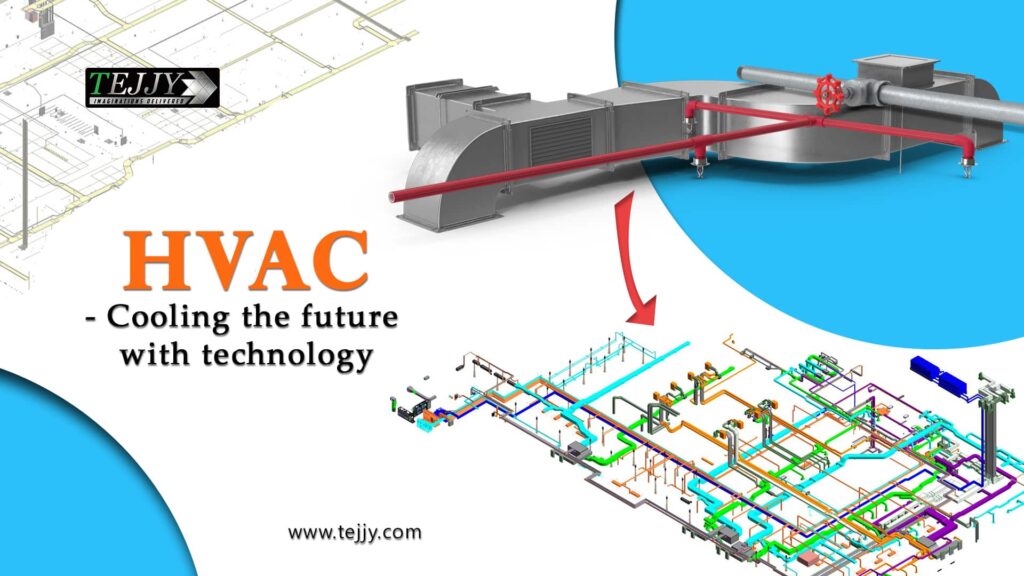
This image is property of www.tejjy.com.
4. Understanding Heat Transfer in HVAC Systems
4.1 Conduction
Conduction is a method of heat transfer that occurs when two objects at different temperatures come into direct contact with each other. In HVAC systems, conduction can occur through solid materials, such as walls, windows, floors, and ductwork. Proper insulation minimizes conduction, preventing heat loss in winter and heat gain in summer.
4.2 Convection
Convection is the transfer of heat through the movement of fluids (either liquid or gas). In HVAC systems, convection occurs when air or water absorbs heat from a heat source and circulates throughout the building. Forced convection, achieved by fans or blowers, enhances the heat transfer process by increasing airflow and improving distribution.
4.3 Radiation
Radiation is the transfer of heat through electromagnetic waves without the need for a medium or direct contact. In HVAC systems, radiation can occur between hot surfaces, such as radiators or heated floors/walls, and occupants or objects in a room. Proper placement of radiant heating/cooling elements ensures efficient heat transfer and comfortable indoor conditions.
5. Common HVAC System Problems
HVAC systems, like any complex mechanical systems, can experience various problems over time. Recognizing common issues can help you identify and address problems promptly, ensuring optimal system performance and longevity.
5.1 Airflow Issues
Airflow issues can arise due to blockages, leaks, or incorrect ductwork design. Insufficient airflow can result in reduced heating or cooling efficiency, uneven temperature distribution, and discomfort. Regularly inspecting and cleaning vents, registers, and ductwork can help prevent airflow problems. Professional HVAC technicians can diagnose and fix more complex issues, such as duct leaks or inadequate duct sizing.
5.2 Refrigerant Leaks
Refrigerant leaks can occur due to damaged pipes, fittings, or connections. A leaking refrigerant can cause a decrease in cooling capacity, increased energy consumption, and potential damage to the compressor. If you notice ice formation on the evaporator coil or a gradual decline in cooling performance, it is essential to have a professional technician locate and repair the refrigerant leak.
5.3 Thermostat Malfunctions
Thermostat malfunctions can lead to inaccurate temperature readings or system control issues. A malfunctioning thermostat may fail to activate the HVAC system when needed, resulting in discomfort and energy wastage. Resetting or recalibrating the thermostat may sometimes resolve minor issues. However, if the problem persists, it is advisable to consult a professional technician for thermostat replacement or repair.
5.4 Dirty Filters
Dirty or clogged filters can restrict airflow, reduce system efficiency, and compromise indoor air quality. It is important to clean or replace filters regularly to prevent dust, pollen, and other contaminants from accumulating. Neglecting filter maintenance can lead to excessive strain on the HVAC system and increase the risk of system malfunctions or breakdowns.
5.5 Uneven Temperature Distribution
Uneven temperature distribution can result from improper ductwork design, blocked vents, or faulty dampers. Some rooms may feel too hot or too cold compared to others, causing discomfort. Adjusting or balancing dampers, cleaning vents, and ensuring proper insulation can help improve temperature distribution. In more complex cases, professional technicians can assess and optimize the HVAC system for better balance.
5.6 Noisy HVAC System
Noisy HVAC systems can be caused by various factors, including loose components, worn-out bearings, or imbalanced fans. Excessive noise can disrupt peace and comfort within a building, indicating underlying issues. Regular maintenance, including lubrication of moving parts and tightening of connections, can minimize noise levels. If the noise persists or worsens, it is advisable to seek professional assistance to diagnose and resolve the problem.
5.7 High Energy Consumption
High energy consumption can be a result of inefficient system operation, poor insulation, or outdated equipment. Energy bills that seem unusually high may indicate underlying problems with the HVAC system. Regular maintenance, upgrading to energy-efficient equipment, and improving insulation can help reduce energy consumption. Professional energy audits can identify areas for improvement and suggest energy-saving measures.
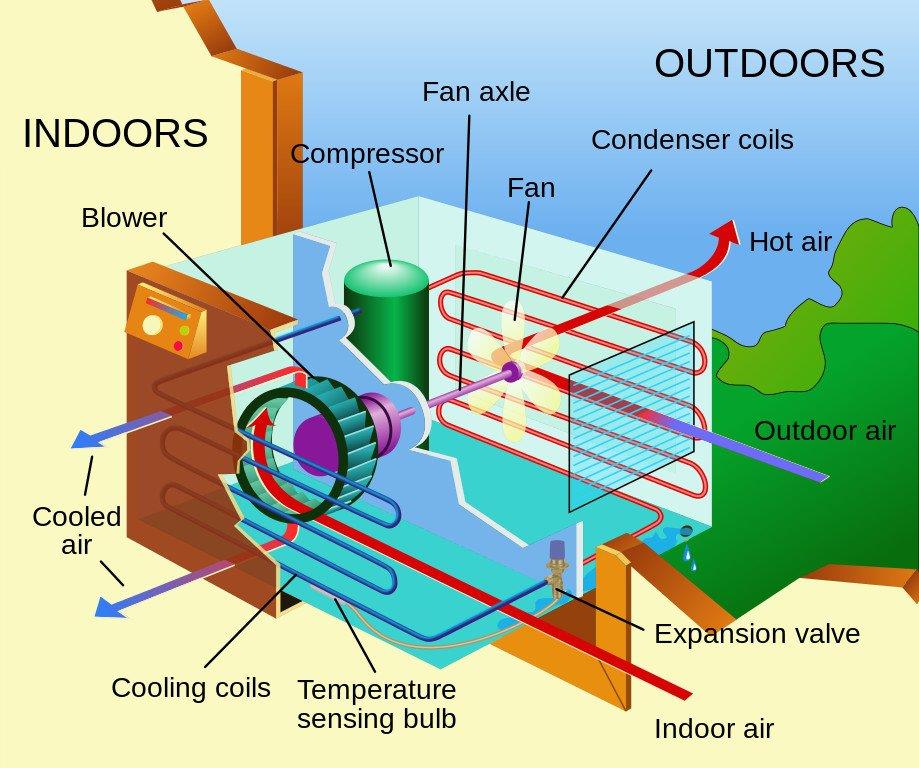
This image is property of www.indiastudychannel.com.
6. HVAC System Maintenance and Repair
6.1 Importance of Regular Maintenance
Regular maintenance is crucial for keeping HVAC systems running efficiently and prolonging their lifespan. Scheduled inspections and tune-ups help identify and address minor issues before they escalate into major problems that require costly repairs. Maintenance tasks may include cleaning coils, lubricating moving parts, checking electrical connections, inspecting controls, and testing system performance. DIY maintenance tips can help homeowners perform basic tasks, but professional technicians should handle more complex maintenance procedures.
6.2 DIY Maintenance Tips
For homeowners interested in maintaining their HVAC systems between professional maintenance visits, here are some useful DIY tips:
- Regularly clean or replace filters to improve airflow and prevent dust buildup.
- Keep outdoor units free from debris, such as leaves or grass, to maintain optimal heat transfer.
- Check thermostat settings and change batteries if necessary.
- Ensure vents and registers are unobstructed for proper airflow.
- Monitor system performance and look out for unusual noises, odors, or temperature inconsistencies.
- Maintain proper insulation to minimize heat gain or loss, reducing the workload on HVAC systems.
6.3 Hiring Professional HVAC Technicians
While DIY maintenance can help keep HVAC systems in good condition, it is essential to consult professional HVAC technicians for more extensive maintenance and repairs. Professional technicians bring expertise, specialized tools, and knowledge to efficiently diagnose problems and perform necessary repairs. They can also provide tailored recommendations for optimizing system efficiency and offer advice on energy-saving strategies.
6.4 Common HVAC System Repairs
HVAC systems may require repairs over time due to component failures, wear and tear, or system malfunctions. Common repairs include fixing faulty electrical connections, replacing worn-out motors or belts, repairing refrigerant leaks, and resolving control system issues. Professional HVAC technicians have the necessary skills and experience to accurately diagnose problems and perform repairs safely. Timely repairs ensure uninterrupted comfort and prevent further damage to the system.
7. Energy Efficiency and HVAC Systems
7.1 Energy Efficiency Ratings
Energy efficiency ratings provide consumers with valuable information about the performance and energy consumption of HVAC systems. Common ratings include Seasonal Energy Efficiency Ratio (SEER) for air conditioners, Heating Seasonal Performance Factor (HSPF) for heat pumps, and Annual Fuel Utilization Efficiency (AFUE) for furnaces. Higher ratings indicate better energy efficiency and lower operating costs. When selecting HVAC systems, it is important to consider energy-efficient models that can provide long-term savings.
7.2 Tips to Improve HVAC Energy Efficiency
Improving energy efficiency in HVAC systems can lead to significant cost savings and reduced environmental impact. Here are some tips to enhance energy efficiency:
- Upgrade to energy-efficient equipment with higher SEER, HSPF, or AFUE ratings.
- Maintain optimal airflow by regularly cleaning filters, vents, and ductwork.
- Utilize programmable or smart thermostats to set temperature schedules and limit energy waste.
- Install zoning systems to independently control different areas or rooms, avoiding unnecessary heating or cooling.
- Incorporate energy recovery ventilation systems to capture and reuse exhaust air’s thermal energy.
- Implement proper insulation to minimize heat transfer and reduce reliance on HVAC systems.
- Consider regular maintenance and tune-ups to ensure optimal system performance and energy efficiency.
7.3 Benefits of Energy Efficient HVAC Systems
Energy-efficient HVAC systems offer several advantages to homeowners and building occupants. Some key benefits include:
- Reduced utility bills: Energy-efficient systems consume less energy, resulting in lower monthly heating and cooling costs.
- Enhanced comfort: Energy-efficient systems provide consistent temperatures and improved humidity control, ensuring year-round comfort.
- Environmental sustainability: Lower energy consumption reduces greenhouse gas emissions and the overall environmental footprint.
- Longer equipment lifespan: Energy-efficient systems often operate at lower capacities, reducing wear and tear and prolonging equipment lifespan.
- Increased property value: Homes and buildings with energy-efficient HVAC systems are attractive to potential buyers and may command higher resale values.
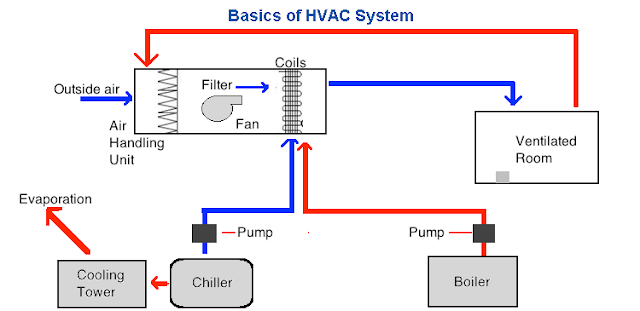
This image is property of 1.bp.blogspot.com.
8. Environmental Impact of HVAC Systems
8.1 Effects on Climate Change
HVAC systems have a significant impact on climate change due to their reliance on energy sources that contribute to greenhouse gas emissions. Traditional energy sources, such as fossil fuels, release carbon dioxide and other pollutants when combusted. These emissions contribute to global warming and climate change. Energy-efficient HVAC systems, renewable energy sources, and sustainable practices are crucial in minimizing the environmental impact of HVAC operations.
8.2 Importance of Sustainable HVAC Practices
Sustainable HVAC practices aim to reduce energy consumption, conserve natural resources, and minimize environmental harm. By adopting sustainable practices, HVAC systems can mitigate their impact on climate change and promote a greener future. Some sustainable HVAC practices include:
- Opting for energy-efficient equipment and technologies during installation or upgrades.
- Integrating renewable energy sources, such as solar panels or geothermal heat pumps, into HVAC systems.
- Implementing energy management strategies, such as load balancing, demand response, and peak shaving.
- Promoting proper insulation, air sealing, and ventilation to maximize energy efficiency.
- Using eco-friendly refrigerants with lower global warming potentials.
- Recycling or responsibly disposing of HVAC system components, including refrigerants and filters.
8.3 Green Alternatives in HVAC Systems
The HVAC industry is continuously advancing to incorporate greener alternatives and sustainable technologies. Here are some notable green alternatives gaining popularity:
- Solar-powered HVAC systems: These systems utilize solar energy to power heat pumps, air conditioners, and other HVAC components.
- Geothermal heat pumps: Geothermal systems use the constant temperature of the earth to provide efficient heating and cooling.
- Energy recovery ventilation: These systems capture and transfer waste heat or coolness between exhaust and fresh air streams, optimizing energy efficiency.
- Smart HVAC controls: Smart technologies and IoT devices enable more precise temperature control, energy monitoring, and remote management, reducing energy waste.
9. New Trends and Technologies in HVAC
9.1 Smart HVAC Systems
Smart HVAC systems integrate advanced technologies, such as sensors, thermostats, and connectivity, to optimize energy usage and enhance user comfort. These systems can learn user preferences, adjust temperature settings automatically, and connect to mobile devices for remote control. Smart HVAC systems offer energy-saving benefits, customized comfort settings, and enhanced convenience for users.
9.2 Zoning Systems
Zoning systems provide individual temperature control for different areas or rooms within a building. By dividing the space into zones and utilizing separate thermostats and dampers, zoning systems allow users to customize temperature settings based on their preferences. Zoning systems minimize energy waste by avoiding unnecessary heating or cooling of unoccupied areas.
9.3 Energy Recovery Ventilation
Energy recovery ventilation (ERV) systems recover and transfer heat or coolness between exhaust and fresh air streams. These systems utilize heat exchangers to transfer thermal energy, improving energy efficiency and maintaining proper ventilation. ERV systems help regulate humidity levels, reduce heating and cooling loads, and enhance indoor air quality.
9.4 Variable Refrigerant Flow
Variable refrigerant flow (VRF) systems utilize advanced heat pump technology to provide efficient heating and cooling. These systems can adjust refrigerant flow rates to match specific needs, allowing for precise temperature control in individual zones. VRF systems offer flexibility, energy savings, and quiet operation, making them suitable for residential and commercial applications.
Understanding HVAC systems is essential for homeowners and building managers to optimize comfort, energy efficiency, and environmental sustainability. By recognizing the basics, types, components, and operations of HVAC systems, as well as common problems, maintenance practices, and advancements in the field, individuals can make informed decisions and take the necessary steps to ensure efficient and reliable HVAC performance. Whether it’s choosing the right system, performing regular maintenance, or considering energy-saving practices, taking care of HVAC systems benefits both occupants and the planet.
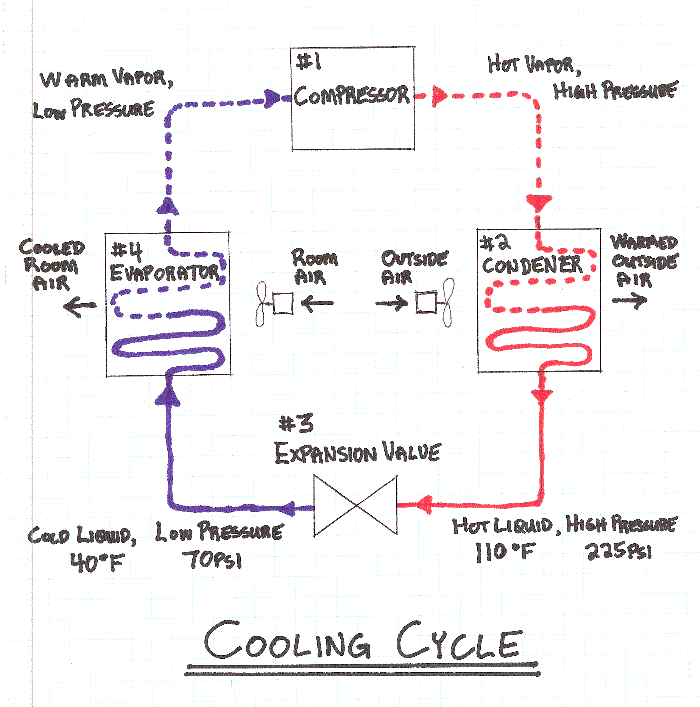
This image is property of www.constructionknowledge.net.


